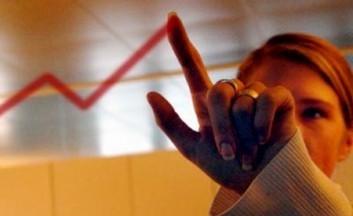Belarus’ payment balance in Q1 2012
 The situation has not changed
The situation has not changed

In Q1 2012 the current account surplus in the payments balance, coupled with statistical differences enabled to offset the net outflow in foreign capital almost entirely. Nevertheless, Belarus needs to attract new external funding to repay previous loans.
According to the National Bank, the current account surplus in Belarus’ payments balance in Q1 2012 was USD 143.5 million against the USD 3.160 billion deficit in Q1 2011.
Foreign trade balance in goods and services in Q1 2012 was positive – USD 1.729 billion against the negative balance USD 2.063 billion a year ago.
The overall surplus in Belarus’ payments balance in Q1 2012 was negative, minus USD 11.4 million vs minus USD 1.397 billion in Q1 2011.
The negative balance of financial accounts in Q1 2012 was due solely to the net outflow of other investments totaling minus USD 1.598 billion (in Q1 2011 the net inflow was USD 196 million). ‘Other investments’ include loans, insurances, retirement programmes and the standard warranties, trade loans and advance payments, other payables and other equity instruments.
In turn, there was an inflow in foreign direct investment (from Belarus residents and nonresidents) – USD 591.3 million, which is 13.1% less than a year ago. At the same time, 81.5% of net revenues from FDI account for reinvested proceeds (USD 482.1 million) – earnings of non-residents in Belarus. It should be made clear there was no real cross-border movement of foreign capital.
According to the National Statistics Committee, net foreign direct investment (excluding direct debt to investors for goods, works, and services) in January-May 2012 decreased by 18.5% to USD 605.7 million with the forecast for 2012 at USD 1.2 billion.
In January-May 2012 the bulk of foreign direct investment was in industry, trade, financial sector (including banks), real estate, transport and communications. Moreover, during this period Belarusian residents sold real estate to foreigners worth USD 31.455 million.
Belarus’ foreign exchange reserves by the IMF standards amounted to USD 8.039 billion on June 1st, 2012. At the same time it is important to emphasize that almost half of the gold reserves (47.6%) were formed at the expense of foreign currency from banks. For instance, the National Bank’s foreign currency liabilities to the banking sector as of June 1st, 2012 were USD 3.829 billion (see Figure 1).
This year the National Bank paid off currency liabilities to banks worth over USD 600 million, the banks paid back the ruble equivalent this amount. The reduced number of swap operations increases the foreign currency supply on the domestic market and cuts down the Belarusian ruble supply in circulation.
For reference. According to the National Bank, the overall external debt of Belarus in Q1 2012 decreased by 0.9% to USD 33.727 billion on April 1 making 80.1% of annual GDP. The relative external debt indicator has exceeded the threshold of Belarusian residents’ economic security (no more than 60% of GDP).
Belarus’ foreign debt per capita was USD 3565 on April 1st, 2012. In Br the external debt reached Br 28.591 million per person, or Br 59.281 million per worker, which makes about 18.8 gross average wages. As a result, in order to pay out the external debt (including interest), an average Belarusian needs to work more than 1.5 years, which is a worrying figure.

Figure 1. Banks’ foreign currency claims to the National Bank and reserve assets in foreign currency in September 2008 – May 2012, USD million.
Subscribe to our newsletter




Situation in Belarus
Constitutional referendum: main consequences


 Video
Video
How to count the political prisoners: are the new criteria needed?


 Video
Video
Paternalism In Decline, Belarusian Euroscepticism, And The Influence Of Russia


 Video
Video











